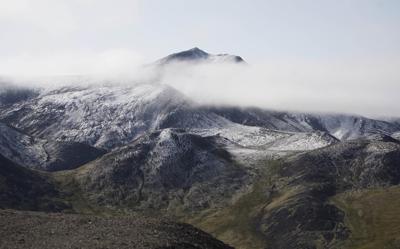JUNEAU, Alaska (AP) — A skull found in 1997 in a remote part of Alaska's Interior belongs to a New York man whose death was likely caused by a bear mauling, according to the Alaska State Troopers.
Investigators used genetic genealogy to help identify the remains as those of Gary Frank Sotherden, according to a statement Thursday from the troopers.
“Based on the shape, size and locations of tooth penetrations to the skull, it appears the person was a victim of bear predation,” Tim DeSpain, an agency spokesperson, said in an email Friday. “It is not known if the bear was the cause of the death.”
Sotherden was reported missing in the late 1970s, DeSpain said. The location in which the skull was found was the general area of Sotherden's last known whereabouts, he said.
DeSpain did not provide a hometown for Sotherden but said he was from upstate New York.
In July 1997, a hunter contacted troopers in Fairbanks and reported finding a human skull along the Porcupine River, around 8 miles (13 kilometers) from the ��ɫtv border. Troopers who went to the area did not find any other remains, the agency said, and the skull was sent to the state medical examiner’s office as unidentified. The suspected cause of death was a bear mauling, according to the troopers' statement.
DeSpain said “relatively recent successes in the department using genetic genealogy to identify unknown perpetrators and victims” prompted a cold case unit last April to ask the medical examiner’s office to submit bone segments from a number of remains.
“These bone samples then went through various laboratory processes to generate DNA profiles, which were then uploaded into public DNA databases,” he said.
Investigators used genetic genealogy to make a tentative identification, and troopers contacted a relative of Sotherden who provided a DNA sample, the agency said.
That relative told troopers Sotherden had been dropped off in the area where the skull was found “sometime in the early- to mid-1970s to go hunting.”
The relative was notified of the DNA match in late December, troopers said.








































